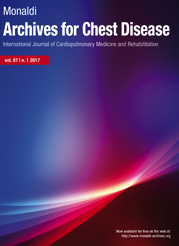Real-world data on home high-flow nasal cannula oxygen therapy in end-stage respiratory disease
All claims expressed in this article are solely those of the authors and do not necessarily represent those of their affiliated organizations, or those of the publisher, the editors and the reviewers. Any product that may be evaluated in this article or claim that may be made by its manufacturer is not guaranteed or endorsed by the publisher.
Accepted: 13 February 2025
Authors
High-flow nasal oxygen therapy (HFNOT) is a cornerstone treatment modality in severe acute hypoxemic respiratory failure, with benefits in improving oxygen deficit while normalizing breathing rate and having an effect on airway humidification. These physiological effects indicate a potential benefit in end-stage chronic respiratory failure. We aimed to assess the clinical impact of home HFNOT in reducing both exacerbation rates and overall disease burden in end-stage chronic respiratory disease. We designed a retrospective study including patients followed in the pulmonology department of a tertiary center who started home HFNOT until June 2023. Pre- and post-home HFNOT exacerbations and hospital admissions were registered, and each patient served as their own control for the statistical analysis. In total, 36 patients were included in the study: 24 patients (66.7%) with interstitial lung disease and 12 (33.3%) with obstructive lung disease. Overall, the median titrated fraction of inspired oxygen was significantly lower in obstructive patients; no significant differences were found between groups regarding titrated airflow. Obstructive patients had a significantly higher number of pre-treatment exacerbations and hospital stays. Both clinical subgroups presented less median overall post-treatment exacerbations and hospital admissions vs. pre-treatment start. Although mortality was high, home treatment was well tolerated by most patients, with only one patient interrupting high-flow therapy due to intolerance. Home HFNOT proved to be an overall feasible treatment strategy for patients with end-stage respiratory disease. Obstructive lung disease patients benefited the most from the treatment, possibly due to hypercapnia correction.
Ethics Approval
The study was conducted under the Declaration of Helsinki and was approved by the Ethics Committee of the Centro Hospitalar Universitário de São João (CHUSJ), Porto-Portugal (CES CHUSJ: 185/2023).How to Cite

This work is licensed under a Creative Commons Attribution-NonCommercial 4.0 International License.






